Prepare for a South Indian Food adventure where every dish is a delicious history lesson for your taste buds! In Kerala, Tamil Nadu, Andhra Pradesh, and Telangana food isn’t just eaten—home kitchens celebrate it!
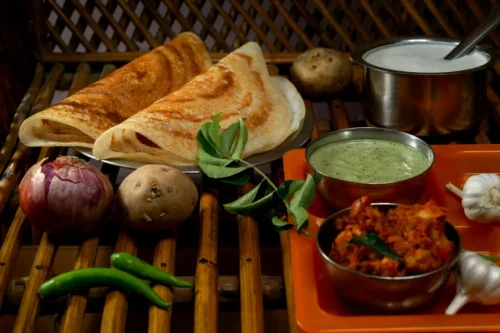
Look beyond the upscale dining venues; the real magic is happening in home kitchens where homemakers are the true culinary rockstars, stirring up centuries of tradition with a dash of local flair. These dishes are like a flavourful journey, taking you on a delicious ride through the rich culture and heritage of the South—one spicy, coconut-laden bite at a time!
The Joy of Cooking in Southern Indian Home Kitchens
The heart of southern Indian cuisine lies in the home kitchen, where the true essence of the region’s culinary traditions is brought to life. Cooking in these kitchens is a labour of love, where time-honoured recipes are prepared with care and attention to detail. The use of fresh, local ingredients, combined with traditional cooking methods, results in dishes that are not only flavorful but also nourishing.
In Kerala, Tamil Nadu, Telangana and Andhra Pradesh, cooking is often a communal activity, with family members coming together to prepare meals and share in the joy of eating. The kitchen is a place of creativity, where ingredients are transformed into dishes that tell a story—of the land, the culture,
South Indian cuisine is all about bold flavours, from aromatic spices to unique cooking methods. Whether it’s a crispy dosa, tangy rasam, or spicy kuzhambu, each preparation tells a story of the region’s rich culinary heritage. What truly stands out is how homemakers in South India keep these traditions alive. They’re the guardians of secret family recipes, passed down through generations, prepared with love and care to ensure every bite stays true to its roots.
Authentic South Indian Cooking Techniques and Ingredients
The heart of South Indian cuisine lies in its authentic cooking techniques and carefully curated ingredients. From the intricate process of grinding spices to the precise timing of tempering, every step in the preparation of a South Indian dish is a testament to the skill and expertise of the homemakers.
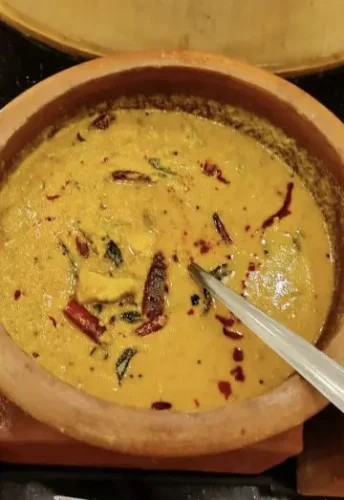
One of the most distinctive features of South Indian cooking is the use of a wide range of spices, each one carefully selected and blended to create a harmonious and complex flavour profile. The homemakers are masters of this art, meticulously grinding and roasting spices such as cumin, coriander, black pepper, and chilli peppers to unlock their full potential. The resulting spice blends, known as masalas, are the foundation of many South Indian dishes, imparting a depth of flavour that is unmatched.
Another hallmark of South Indian cuisine is the use of fermentation, a technique that has been perfected by homemakers over generations. From the batter for idlis and dosas to the tangy chutneys and pickles, fermentation is a crucial step that enhances the flavours and nutritional value of the dishes. The homemakers carefully monitor the fermentation process, ensuring that the perfect balance of tanginess and texture is achieved.
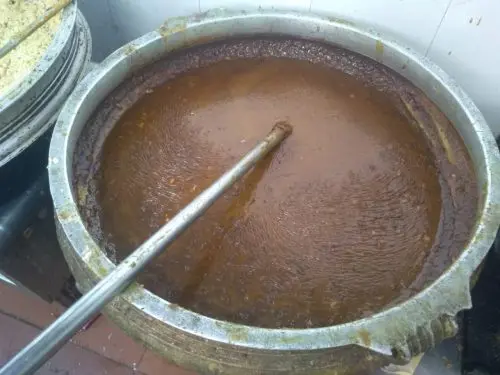
Equally important are the unique cooking methods employed in South Indian kitchens. The use of clay pots, known as “Kuzhi Paniyaram,” for steaming and roasting, and the intricate process of tempering spices in hot oil, known as “Tadka,” are just a few examples of the techniques that have been passed down through the generations. These methods not only enhance the flavours of the dishes but also imbue them with a distinct regional character.
Join us on a journey into the heart of these kitchens, where tradition meets taste. From the lively streets of Chennai to the aromatic homes of Telangana and the peaceful backwaters of Kerala, get ready to savour the authentic, time-honoured flavours of South India.
Kerala: The Coastal Flavours of God’s Own Country
Kerala, often referred to as “God’s Own Country,” is a coastal paradise where the sea plays a significant role in shaping its culinary landscape. The state’s cuisine is a harmonious blend of spices, coconut, and fresh seafood, with rice as the staple of every meal. The influence of centuries-old trade routes, which brought in spices like black pepper, cardamom, and cloves, is evident in every bite.
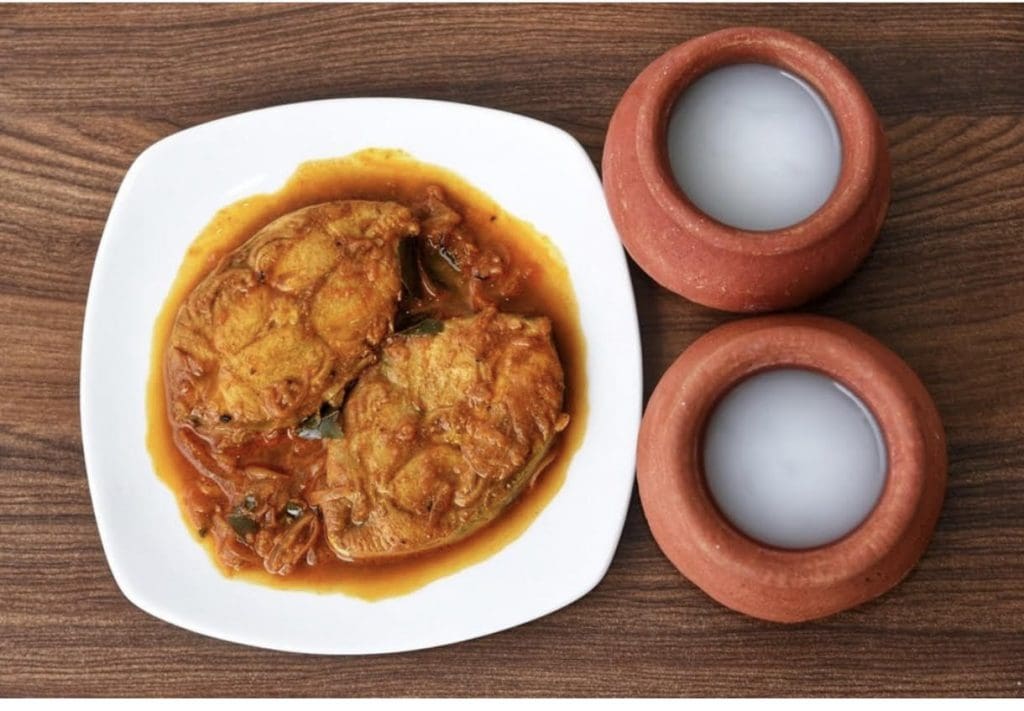
One of Kerala‘s most iconic vegetarian dishes is Avial, a medley of seasonal vegetables cooked in rich coconut gravy, flavoured with curry leaves and green chillies. Avial is believed to have originated in the royal kitchens of Travancore, and it remains a staple in every Keralite home. The dish is not only delicious but also symbolizes the resourcefulness of the region’s cuisine—using whatever vegetables are available to create something extraordinary.
Another quintessential dish is Puttu, a steamed rice cake layered with grated coconut. Puttu is often served with Kadala Curry (black chickpeas curry) or ripe bananas, making it a versatile dish enjoyed at any time of the day. The simplicity of Puttu, combined with its unique texture and flavour, makes it a beloved comfort food in Kerala.
Kerala’s coastline provides an abundance of fresh seafood, and the state’s home kitchens are where some of the most flavourful seafood dishes are created. Karimeen Pollichathu is a traditional dish where the pearl spot fish, marinated in a mixture of spices and wrapped in a banana leaf, is grilled to perfection. The result is a dish that is moist, tender, and infused with the earthy aroma of the banana leaf.
Another seafood delight is Chemmeen Curry, a prawn curry cooked in a tangy and spicy coconut milk gravy. The combination of succulent prawns with the richness of coconut milk, tempered with mustard seeds, curry leaves, and a hint of tamarind, creates a dish that is a true celebration of Kerala’s coastal flavours.
Nadan Kozhi Varuthathu (Spicy Chicken Fry) is a Kerala speciality, known for its crispy texture and fiery flavours. Marinated in a blend of spices and curry leaves, the chicken is fried to perfection, resulting in a dish that’s both crunchy and tender. It’s a must-try for those who love bold, spicy flavours and is perfect as a snack or paired with rice or parotta.
Appam with Stew is a quintessential dish of that perfectly balances flavour and texture. The appam, a soft and fluffy rice pancake with a slightly crispy edge, serves as the ideal companion to the rich and creamy coconut stew. The stew, often made with vegetables, chicken, or mutton, is simmered in a fragrant mix of coconut milk, curry leaves, and spices. This combination is a breakfast favourite in Kerala, where the delicate appam soaks up the savoury stew, creating a delightful fusion of tastes in every bite.
One of the most iconic desserts in Kerala is the payasam, a creamy, milk-based pudding that can be flavoured with a variety of ingredients, from cardamom to saffron. The homemakers of the region have perfected the art of creating the perfect payasam, carefully balancing the sweetness with the richness of the milk and the fragrance of the spices. From the classic ada payasam or the innovative paal payasam, each bite is a burst of flavour.
Tamil Nadu: The Quintessential Sambar and Idli
Tamil Nadu’s cuisine is a reflection of its deep-rooted history, cultural diversity, and love for bold flavours. Known for its use of spices like turmeric, red chillies, and mustard seeds, Tamil Nadu’s dishes are vibrant, aromatic, and often accompanied by rice, which is the cornerstone of every meal.
No culinary journey through Tamil Nadu would be complete without Sambar, Dosa and Idli. Sambar, a lentil-based stew made with tamarind, vegetables, and a robust spice blend, is a staple in every Tamil household. It is often served with Idli, a soft, steamed rice cake, making for a perfect combination that is enjoyed across the state.
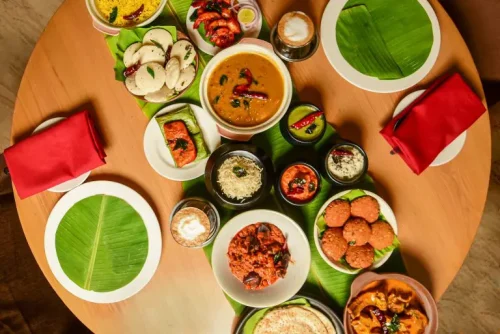
Idli is not just a breakfast dish; it is a symbol of Tamil Nadu’s culinary ingenuity. Made from fermented rice and urad dal batter, Idlis are light, fluffy, and easy to digest, making them a popular choice for people of all ages. The art of fermenting the batter, the precise timing of steaming, and the perfect pairing with coconut chutney and sambar are all authentic preparations, each with a special touch, passed down with love and reverence by homemakers.
Similarly, the classic dosa, with its paper-thin crispiness and aromatic fillings, is a true masterpiece that requires immense skill and patience to perfect. Homemakers are masters of the dosa-making process, skillfully pouring and spreading the batter on a hot griddle to create the perfect crispy texture. Whether it’s the classic masala dosa, with its spicy potato filling, or the innovative rava dosa, made with semolina, each dosa is a testament to the homemakers’ culinary prowess.
Pongal, a savoury rice porridge, is a comforting and nourishing start to the day, while the flaky, buttery vada and the tangy, spicy upma offer a delightful contrast of textures. One of the most iconic Tamil lunch and dinner dishes is the kuzhambu, a tangy and spicy curry that can be made with a variety of vegetables, lentils, or proteins.
The Chettinad region of Tamil Nadu is famous for its spicy and aromatic cuisine, which is known for its liberal use of spices like fennel, star anise, and cinnamon. One of the most popular dishes from this region is Chettinad Chicken, a fiery chicken curry that is both complex in flavour and deeply satisfying. The chicken is marinated in a blend of spices and cooked with onions, tomatoes, and coconut, resulting in a dish that is rich, spicy, and full of character.
Another Chettinad speciality is Kuzhi Paniyaram, small, round dumplings made from fermented rice and urad dal batter, similar to Idli but with a crispy exterior. Paniyaram can be savoury or sweet and is often served with chutneys and sambar, making it a versatile snack that is loved by many.
Andhra Pradesh: The Fiery Flavours of the Deccan
Andhra Pradesh is known for its bold, spicy, and tangy cuisine, where chillies play a central role. The region’s dishes are often fiery, but they also offer a balance of flavours, with the use of tamarind, coconut, and jaggery to temper the heat. Rice is the staple grain, and it is often accompanied by a variety of pickles, chutneys, and curries that showcase the region’s culinary diversity.
An iconic dish Pesarattu, a green gram dosa that is crispy, savoury, and packed with protein. Unlike the traditional dosa made from rice and urad dal, Pesarattu is made entirely from green gram, giving it a unique flavour and texture. It is often served with Allam Pachadi (ginger chutney) or coconut chutney, adding a refreshing contrast to the earthy flavour of the dosa.
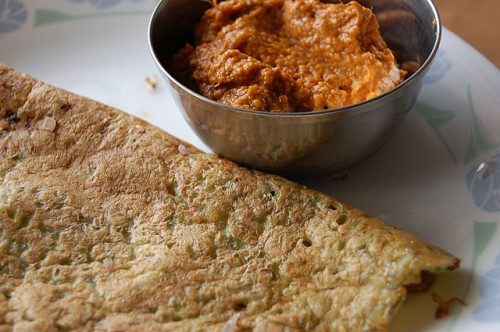
Pulihora, also known as tamarind rice, is another beloved dish in Andhra Pradesh. It is a tangy, spicy rice dish that is often prepared during festivals and special occasions. The rice is flavoured with tamarind, curry leaves, peanuts, and a blend of spices, creating a dish that is both comforting and full of flavour.
Pulasa Pulusu is a true gem of Andhra Pradesh, made from the highly prized Pulasa fish, which is available only during the monsoon season. Known for its tender, flavorful meat, Pulasa Pulusu is a tangy, spicy curry that’s as nutritious as it is delicious. The fish is cooked in a blend of tamarind, onions, and traditional spices, creating a unique flavour profile that’s hard to find anywhere else.
For seafood enthusiasts, Royyala Yeppadu is an absolute must-try. This fiery prawn dish is a favourite in Andhra cuisine, where prawns are marinated in a mix of bold spices and then fried to perfection. The result is a dish that’s crispy on the outside, juicy on the inside, and packed with intense flavours.
Kodi Kura (chicken curry) is another classic dish from Andhra Pradesh, known for its fiery flavour and rich gravy. The chicken is cooked with a blend of spices, coconut, and tamarind, resulting in a dish that is bold, spicy, and full of flavour. Kodi Kura is often served with rice or Ragi Mudda (ragi balls), a traditional accompaniment that helps balance the heat of the curry.
Kodi Pulao is a hearty dish that brings together the best of both worlds—tender meat and aromatic rice. This spicy, flavorful pulao is a staple for meat lovers in South India.
The Spice of Andhra is the apt name given to Gongura and Kodi Kura. Gongura is a leafy green that is central to Andhra cuisine, and it is used in a variety of dishes, most notably Gongura Pachadi (a tangy chutney) and Gongura Mutton. The tangy flavour of gongura leaves pairs beautifully with the richness of mutton, creating a dish that is as delicious as it is distinctive.
Home-Cooked Treasures of Telangana
In the warm, bustling kitchens of Telangana, culinary magic unfolds daily, bringing forth dishes steeped in tradition and local flavours.
No mention of South Indian cuisine would be complete without Hyderabadi Biryani. This iconic dish is renowned across the world for its intricate layers of fragrant basmati rice, and succulent meat, and infused with saffron, cardamom, and other spices. Originating from the royal kitchens of Hyderabad, the Biryani is a dish that embodies the opulence of Mughlai cuisine.
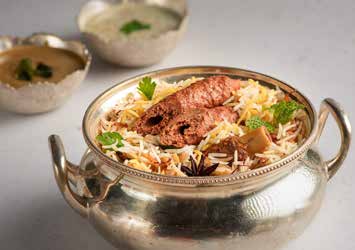
Another cherished dish is Mirchi ka Salan, where large green chillies are simmered in a thick gravy made of peanuts, sesame seeds, and tamarind, creating a perfect blend of heat and tang.
Sakinalu, a snack exclusive to Telangana, especially during festivals like Sankranti, is crafted from rice flour and sesame seeds, deep-fried to crispy perfection. For vegetarians, Pachi Pulusu, a raw tamarind soup with onions and green chillies, offers a refreshing taste particularly cherished during the hot summers. These dishes, lovingly prepared in the heart of home kitchens, are not just meals but a celebration of Telangana’s enduring culinary heritage.
In addition to the well-known classics, Telangana’s cuisine offers a variety of lesser-known yet equally delectable dishes that highlight the state’s culinary diversity. Gutti Vankaya, a spicy and flavourful stuffed eggplant curry, and Kodi Kura, a robust country chicken curry, are staples in local households. Sarva Pindi, a savoury pancake made from rice flour, chana dal, and spices, offers a crunchy, tasty snack often enjoyed in the evenings.
For those with a sweet tooth, Qubani ka Meetha, made from dried apricots and garnished with cream, is a luxurious dessert that showcases the region’s affinity for nuanced flavours. These dishes, each carrying the essence of Telangana, make every meal in the region a delightful exploration of taste and tradition.
The Role of Spices in Southern Indian Cuisine
Spices play a crucial role in South Indian food, adding depth, flavour, and aroma to every dish. In Kerala, spices like black pepper, cardamom, and cloves are used to create rich and aromatic curries, while in Tamil Nadu, the emphasis is on red chillies, mustard seeds, and turmeric to create vibrant and flavorful dishes. Andhra Pradesh, known for its love of heat, uses a variety of chillies, tamarind, and garlic to create bold and spicy curries that are balanced with tangy and sweet elements.
The use of local ingredients, such as coconut in Kerala, tamarind in Tamil Nadu, and chillies in Andhra Pradesh, highlights the importance of regional produce in shaping traditional South Indian food.
Home Kitchens: The Heart of South Indian Food Traditions
South Indian food is a cultural symbol that has transcended the boundaries of the region and become a global phenomenon. The South Indian food trail covers the cuisine of Kerala, Tamil Nadu, Telangana and Andhra Pradesh and is a reflection of the region’s history, culture, and way of life. In each of these states, meals are a communal experience, where families gather around the table to share food and stories. The recipes are passed down through generations, preserving the culinary heritage and ensuring that the flavours of the past continue to be enjoyed by future generations.
The homemakers of South India have played a pivotal role in this transformation, ensuring that the flavours, techniques, and traditions of their culinary heritage remain intact, even as the world around them evolves.
Through their meticulous attention to detail, their mastery of traditional cooking methods, and their deep respect for the region’s culinary history, these homemakers have played a crucial role in this cultural narrative, serving as the custodians of a culinary legacy and ensuring that the flavours and aromas of South Indian food extend far beyond the realm of cuisine.
Read More: Latest



